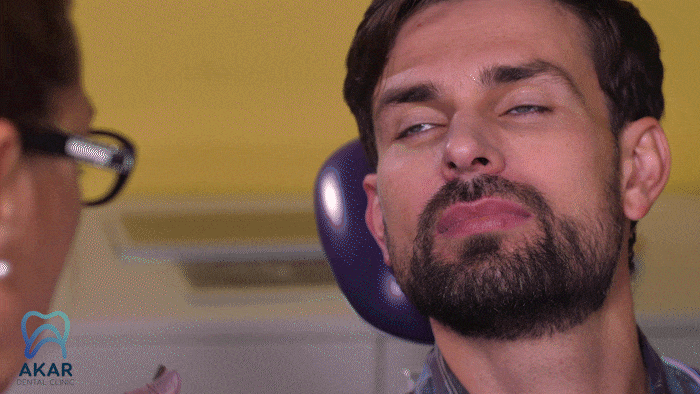

 Local anesthesia services are the process of injecting local anesthetic to make it insensitive to pain or the pain of the applied procedure on a regional basis. In dental operations, local anesthesia is usually used inside of the mouth. In local process anesthesia Lidocaine and its derivative anesthesia medicines are injected into the patient’s operation area with a 27-G needle injector.
Local anesthesia services are the process of injecting local anesthetic to make it insensitive to pain or the pain of the applied procedure on a regional basis. In dental operations, local anesthesia is usually used inside of the mouth. In local process anesthesia Lidocaine and its derivative anesthesia medicines are injected into the patient’s operation area with a 27-G needle injector.
Local anesthesia is commonly used for dental treatments such as crowns, veneers, implants, fillings, extractions, root canals, or gum surgery. The local anesthesia method is considered safe and effective for both conformities of the patient and dentist during the dental process when a trained professional manages it.
What is Local Anesthesia?
 In dental operations, local anesthesia is applied to the most appropriate injection site in the patient’s operation area. The local anesthesia procedure aims to neutralize the nerves in the patient’s operation area and thus prevent any feeling of pain. The feeling of pain is experienced because the nerves give a warning to the brain. The neutralization of the nerves prevents brain stimulation, and the dental procedure is performed without giving the patient any discomfort or pain.
In dental operations, local anesthesia is applied to the most appropriate injection site in the patient’s operation area. The local anesthesia procedure aims to neutralize the nerves in the patient’s operation area and thus prevent any feeling of pain. The feeling of pain is experienced because the nerves give a warning to the brain. The neutralization of the nerves prevents brain stimulation, and the dental procedure is performed without giving the patient any discomfort or pain.
After the local anesthesia procedure is done, it takes a few minutes for the injected drug to take effect, and then the dental operation process is started. If the patient afraids of injection, anesthetic gels can be applied to the gum areas or site to make the injection process less painful. Conditions like nausea and dizziness after dental local anesthesia are common, and considered as normal side effects.
 Also, hypothyroidism and local dental anesthesia are two of the issues that need to be considered. Congenital hypothyroidism is an endocrine illness that produces physiologic alterations. Congenital hypothyroidism can be defined as an endocrine disorder that causes some changes in an individual’s physiology. While some patients do not have any disorder, some negative conditions may be experienced in other patients after surgical procedures. People with this condition have a higher rate of respiratory issues after surgical treatments. This means that patients with these diseases need a very low-dose injectable solution if local anesthesia is required.
Also, hypothyroidism and local dental anesthesia are two of the issues that need to be considered. Congenital hypothyroidism is an endocrine illness that produces physiologic alterations. Congenital hypothyroidism can be defined as an endocrine disorder that causes some changes in an individual’s physiology. While some patients do not have any disorder, some negative conditions may be experienced in other patients after surgical procedures. People with this condition have a higher rate of respiratory issues after surgical treatments. This means that patients with these diseases need a very low-dose injectable solution if local anesthesia is required.
Local anesthesia in dental operations varies depending on the application region. Local anesthesia techniques for different parts of the mouth anatomy are as follows:
Mandibular Anesthesia
It is used to perform several surgical procedures on the lower half of the jaw, including dental surgery. With this anesthesia technique, which lasts approximately 4 hours, the lingual nerve located in the jaw area indirectly becomes numb by making an alveolar nerve block. The use of mandibular anesthesia in the extraction of molar and premolar teeth in the lower jaw is common.
Tuber Anesthesia
Tuber anesthesia is one of the techniques of local anesthesia in dentistry. It is used for numbing the upper great molar and the soft tissue here, which are innervated by the alveolar superior posterior, which is connected to the maxillary nerve. During tuber anesthesia, the patient’s mouth is positioned so that the airway remains open. The inner part of the cheek is nervously excluded from the mouth mirror used in dental operations.
Subperiosteal Anesthesia
The upper molars and soft tissues, innervated by the alveolar superior and posterior sections and connected to the maxillary nerve, are anesthetized using that. While applying tuber anesthesia, the patient’s mouth is positioned so the aid remains open and the inner cheek is tautly retracted by the mouth mirror used in dental operations. The insertion site of the injection needle is the deepest part of the mucogingival fold at the level of the mesial root of the third molar.
In addition, there are different anesthesia types, such as foramen incisive anesthesia and foramen palatinum majus anesthesia, according to other application areas in the mouth. However, since there are no significant differences in application, explaining the anesthesia techniques listed above is sufficient for understanding the local anesthesia models applied for dental surgeries. The correct application of all these anesthesia techniques is necessary to prevent the side effects of dental local anesthesia.
How To Apply Local Anesthesia?
 Local anesthesia applications are performed by direct injection. However, a freeze spray is applied to the injection area first if the patient does not feel pain. After determining the treatment to be applied to the patient, the operation site is determined. Our dentists, specialists in their field, perform the local anesthesia procedure depending on the anesthesia area and techniques appropriate for the operation area.
Local anesthesia applications are performed by direct injection. However, a freeze spray is applied to the injection area first if the patient does not feel pain. After determining the treatment to be applied to the patient, the operation site is determined. Our dentists, specialists in their field, perform the local anesthesia procedure depending on the anesthesia area and techniques appropriate for the operation area.
The following are the considerations to be taken into account in the application of local anesthesia:
- The mucous tissue must be in a stretched position.
- The needle tip must be sharp.
- The injection should be slowly injected.
- The solution should be at room temperature.
Injecting under the periosteum should be avoided when using local anesthetics during the dental procedures. Nerve damage and other consequences that continue for three to six months can be brought on by medical malpractice in local anesthetic treatments. This is why experts should carry out anesthesia procedures, especially given that local anesthesia is applied in multiple ways during dental surgeries. At Akar Dental, we promise to deliver healthcare in the finest manner possible during all dental procedures and operation processes.
Local anesthesia is safe when done correctly and by a professional knowledgeable about anesthesia procedures. In addition to being safe, local anesthesia is essential for the patient’s comfort, the ability to undergo dental operations without experiencing pain, and the overall performance of the surgery.
No side effects can be considered complications when the local anesthesia procedure applied in dental operations is applied correctly, in the right amount, and with the proper technique. For example, headaches or dizziness after local dental anesthesia are among the most common side effects, but most patients do not experience these conditions after treatment.
A local anesthetic may not be the best anesthesia technique for people with hemophilia, which causes blood to not clot, those taking blood thinners, and people with lumbar infections. It occurs if there is a blood-thinning drug use status due to the health form filled out by the patient during the clinical consultation. It is decided by the physician whether to stop using the drug, taking into account the patient’s reason for using the blood thinner and other health factors.
You can contact us to get more information about our oral and dental health treatments and the opportunities we offer.